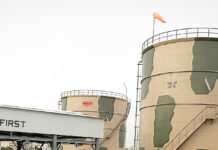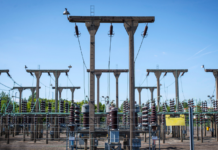- Out of nearly 180 million working-age people, around 118 million, or two in three, are unpaid workers engaged in domestic, caregiving or livestock tasks
Pakistan’s unemployment rate climbed to 7.1% in FY2024-25, the highest in 21 years, according to the latest Labour Force Survey released by the federal government. Planning Minister Ahsan Iqbal said the increase reflected the impact of the IMF stabilisation programme, severe climate events and a prolonged global price cycle.
The Pakistan Bureau of Statistics (PBS) chief statistician Dr Naeemuz Zafar said the jobless rate had risen from 6.3% in 2021 to 7.1% in the last fiscal year, the highest since 2003-04. Unemployment has otherwise remained within a narrow band of 5.3% to 6.9% over the past two decades.
The survey shows Khyber Pakhtunkhwa recorded the highest unemployment rate at 9.6%, followed by Punjab at 7.3%, Balochistan at 5.5% and Sindh at 5.3%. Officials noted that Pakistan’s average economic growth, stuck below 3% for several years, has failed to create enough jobs for the 3.5 million people entering the labour market annually.
Ahsan Iqbal said floods in 2022 and 2025 had displaced millions and damaged economic activity, while the IMF programme’s policy tightening had restrained growth and employment. Pakistan entered the three-year, $7 billion programme in September last year, agreeing to nearly 50 conditions.
Out of a working-age population of nearly 180 million, about 118 million people, two out of every three, were reported as unpaid workers performing domestic, caregiving or livestock-related tasks. PBS data shows 23% were engaged in childcare, 18.7% in livestock, 7% in fetching water and 7.1% in poultry-raising at home.
Of the 5.9 million unemployed people, 4.6 million, or 77.5%, are literate, while around one million hold formal educational degrees. Youth unemployment remains the most acute, with the highest numbers in the 15–29 and 15–24 age brackets.
Sector-wise trends show the employment share of agriculture falling by 4 percentage points to 33.1% as workers shift toward services. Manufacturing employment declined marginally to 14.4%, reflecting pressure from high interest rates, elevated energy tariffs and heavy taxation. Wholesale and retail trade employment rose to 16%.
The survey’s release is part of Pakistan’s commitments under the IMF programme. PBS officials said the livestock census and the Labour Force Survey had been completed in line with those requirements, while the Household Integrated Economic Survey will be published next month.
Labour force participation rose from 44.9% to 46.3% during the period, with the total labour force increasing from 71.8 million in 2020-21 to 83.1 million in 2024-25. Employees made up the largest share of the workforce at 43.5%, followed by own-account workers at 36.1%, contributing family workers at 19.1% and employers at 1.3%.
The informal sector continues to dominate, accounting for more than 72% of non-agricultural employment, with rural areas showing a significantly higher informal share than urban centres.
The report also records a notable rise in average monthly wages, increasing from Rs24,028 in 2020-21 to Rs39,042 in 2024-25. Male wages increased from Rs24,643 to Rs39,302 and female wages from Rs20,117 to Rs37,347. The planning minister said the wage gap between men and women had narrowed considerably over the survey period.
PBS data further highlighted the significant burden of unpaid domestic and care work on women, with 45.4 million involved in household tasks, 32.1 million in livestock activities and 20 million engaged in caregiving responsibilities.
























